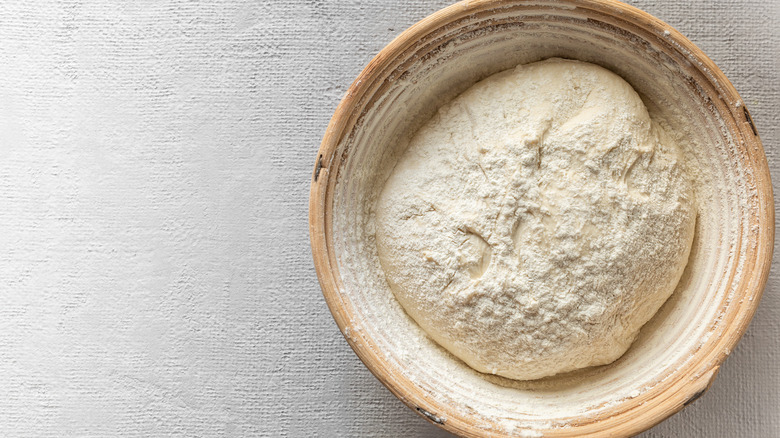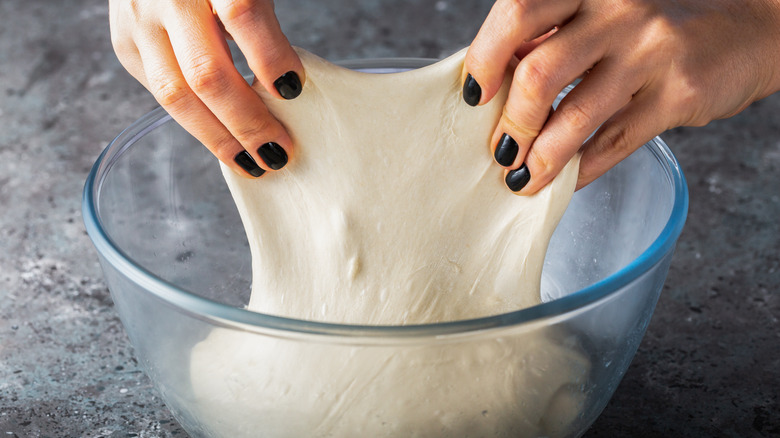The Importance Of Folding Bread Dough During Bulk Fermentation
When you're making bread, every step along the way matters. But bulk fermentation may be the most overlooked in the process. Bulk fermentation is also known as first rise because this is when your bread dough grows as one unshaped whole, developing the texture and flavor that will make its way into your final loaf. While most people see this stage as the point where you develop the air pockets that give your bread its density and rise, there are a lot of other reactions happening behind the scenes. A big one is that your bread is still developing its gluten strands as the air pockets pull the dough apart, and that's where the importance of folding your bread during this stage comes in.
Most gluten formation in your loaf of bread happens during kneading, but that's only the beginning. Folding and stretching the dough during fermentation further builds up the gluten, the same way it does when you press the dough apart during the kneading step. Folding also maintains the consistency of your dough. It breaks up large air bubbles into smaller, more evenly-sized holes, and regulates the temperature of the dough by essentially re-mixing it and letting parts that have grown apart come back into contact, so one part isn't growing faster than the other. Finally, it means all the yeast in your dough is getting redistributed evenly, so some parts that have exhausted their growth can find new sugars to feed on and keep growing.
Folding bread dough is a way to managed growth and develop gluten
All these stages of handling your bread dough are ways to maintain control over its development. Folding as a technique is connected to punching down, also called degassing. This is done to interrupt the rise, which keeps the gluten from overstretching and breaking, maintaining its strength. Folding is a lighter process than kneading, your goal is to keep developing the gluten without completely deflating all the air bubbles. The folding technique isn't complex, but it is more delicate, and overhandling during this stage could lead to a flat loaf of bread.
Folding can be done in the bowl, or by gently turning out your dough onto a floured surface. Simply handling the dough should be enough to deflate it, so you may only need to lightly press it down to remove bigger air bubbles. Then perform two quick "letter" folds. Take one end, pull it out to stretch the dough, then fold it back over your bread just past the center. Then take the opposite end, stretch it, and fold it back over all the dough. Rotate your bread 90 degrees and repeat with the two remaining sides. Press the point where the last fold meets the dough together to seal it, and then return your dough to the bowl. It can now be left for its second rise, developing stronger, more even gluten bonds and more flavor with less of a risk of growing too big.

